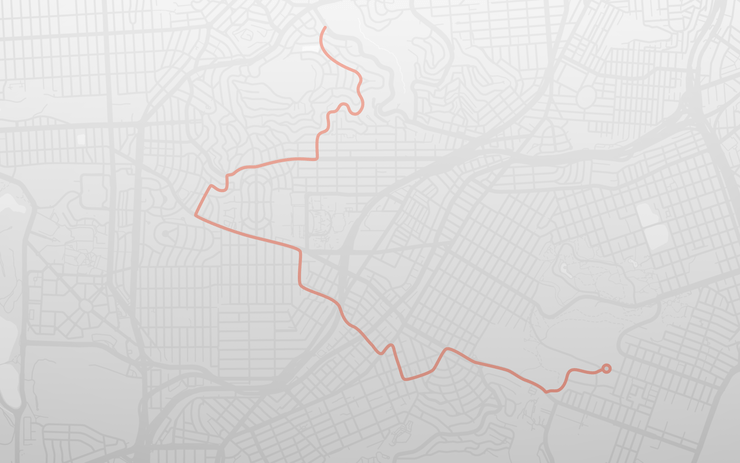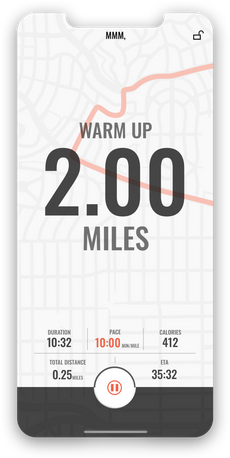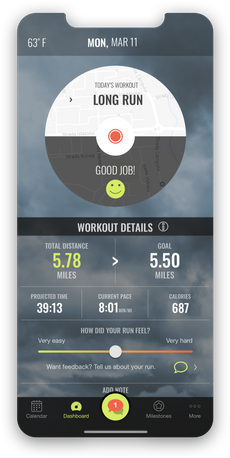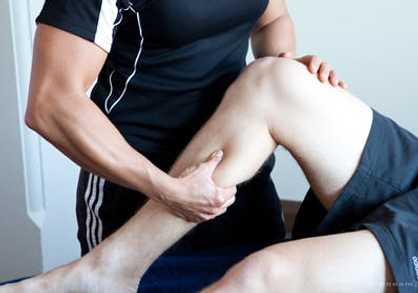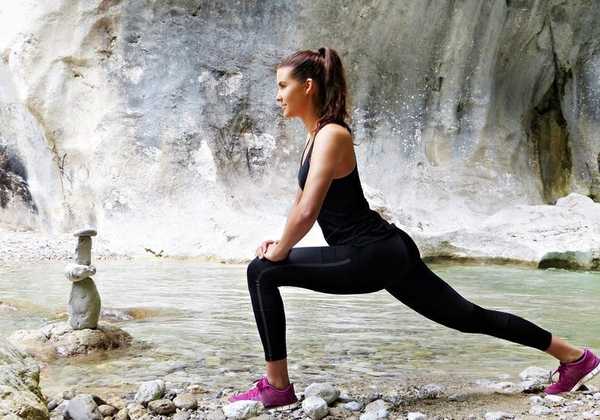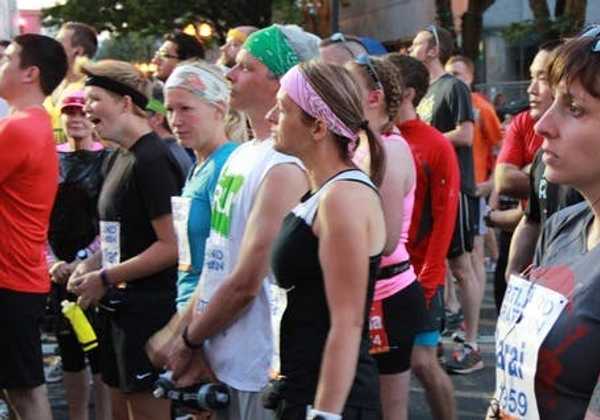There's running, then there's running fast
November 28th 2019
by Matt Forsman a.k.a. Marathon MattIf you think 'running' and 'running fast' are the same sport, think again. 'Running' is tough, don't get me wrong. It demands a lot.
But, if you run often enough, long enough, your body adapts. The act may never become easy, but it does get 'easier'. It should get more comfortable.
Running fast requires a completely different approach. It requires embracing fatigue. It requires becoming comfortable (or at least tolerant) of fatigue. Running fast hurts.
I work with many who want to run faster. Most are willing to do the work. But, most are often challenged to embrace (or at least accept) the idea that getting faster requires getting uncomfortable.
Unlike simply running, running faster largely stays uncomfortable no matter how much of it you do. Some days might be marginally more tolerable than others. But, getting faster involves discomfort. There's simply no way around it.
Outlined below are a handful of tips for making the transition from 'simply running' to 'running faster'.
Run Fast.
It may sound trite. But, if you want to run faster, then run fast. There are a million ways to do it.
You can do fartlek, you can do tempo runs, you can do intervals at the track, and the list goes on. But, there's simply no way to get faster unless you incorporate some faster running into your schedule on a regular basis. Just like with getting into a regular running routine, you want to proceed gradually, progressively, and methodically.
Running fast(er) asks more of your body. It asks more muscles to do more work. Your body needs some time to adapt to this increaed workload. So, start slow.
Starting with fartlek (aka-'speed play') is a great idea. Fartlek is typically loosely structured (akin to 'play') and usually only involves short surges or sprints. It's a relatively easy way to get acquainted with speed.
Know Thyself.
Many serious runners keep a training diary that includes how many miles they ran on a given day, average pace, weekly mileage, and other relevant details. It's not a bad idea to do this, but there are other ways to keep track of your running progress.
If you're using SportMe Run Trainer, you've got access to plenty of great data you can leverage. Start paying attention to this data. Get a handle on what your average pace and distance looks like. Track your weekly mileage.
In order to get faster, you need to get a handle on where you area and what you're capable of currently. If you can run 5 miles in 45 minutes comfortably, it's likely you can manage a 10K (6.2 miles) in under an hour. If you can barely get through 3 miles in 33 minutes, running a 10K under an hour might be a stretch.
Knowledge is power. Maintaining a training diary (and reviewing it) and/or reviewing your training data in the SportMe Run Trainer will help you glean all kinds of knowledge about who you are as a runner. Knowing who you are as a runner can help you take the appropriate steps towards getting faster and setting appropriate goals.
Embrace Discomfort.
OK. You don't have to hug discomfort. You don't have to invite it over for dinner.
But, you need to at least 'accept' that getting faster involves discomfort. There's no way around it. Running faster is uncomfortable.
You will be breathing harder, which can be alarming if you've never done it before. Your legs will get tired and heavy in a way they haven't before. You might even sweat profusely from the level of effort.
You may not like any of this and you don't have to. But, you must accept that it is part of the process of becoming a faster runner. Without, these 'rites of passage', you will not get faster.
Try to accept the discomfort for what it is. It's part of the process of becoming faster. If you're not feeling some degree of discomfort, you're not doing it right.
This doesn't mean you should be killing yourself all the time. I would always discourage this. But, 'some' discomfort is required in order to get faster.
Check Your Head.
Running faster requires more of your body AND your head. Do whatever you can to get yourself into a positive head space prior to tackling your faster running. What this requires is a highly individual thing.
But, there are a few things that always help me get ready for being 'uncomfortable'. I like to watch video of the pros (Shalane Flanagn, Galen Rupp, Meb Keflezghi) running in the latter stages of one of their races. Seeing some of the best on the planet manage the INCREDIBLE discomfort they must feel and still keep moving forward never fails to inspire.
I have certain go to movies that get me ready to get uncomfortable. Pretty much any flick that involves an underdog works for me. Rocky (almost all of them) works. The ridiculous training montage from Rocky IV always seems to strike a chord for me.
I like to dial up a few specific songs on my playlist before I hit the track. Guns N' Roses ('Welcome to the Jungle'), Led Zeppelin ('Kashmir'), and Beastie Boys ('Sabotage') always seem to wake me up and get me ready for battle. I'm getting ready for a fight when I head to the track.
Some combination of video footage of the pros, a key scene or two from my favorite flick, and/or a few of my power songs usually check my head.
Keep Showing Up.
Given the discomfort running faster requires, it's easy to understand why one might get turned off. It's not easy to run. It's particularly tough to run faster.
But, just like learning to run, you have to keep showing up in order to get better at it. You may not want to every time. You will have crappy days.
If you can find a way to show up despite not wanting to, if you can gut out the crappy days, you will get faster. It's not a question of if, but when. You will run faster.
When I was at my fastest as a marathoner, I wasn't doing anything magical. I was really just doing a couple simple things. I embraced discomfort and I showed up no matter what.
I was ruthlessly committed to my tempo runs on Tuesday, my track workouts on Thursdays, and my challenging long runs on Saturdays (that usually included tempo). I was ruthlessly committed for nearly three years. During this period, I knocked nearly 45 minutes off my marathon time.
I'm not saying the same could happen with you, but it might. There are a million different ways to train, but the one thing that works universally is consistency over time. Keep showing up.

